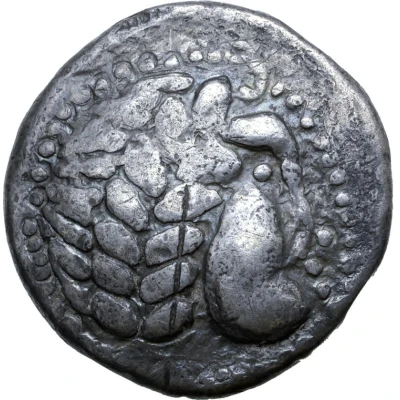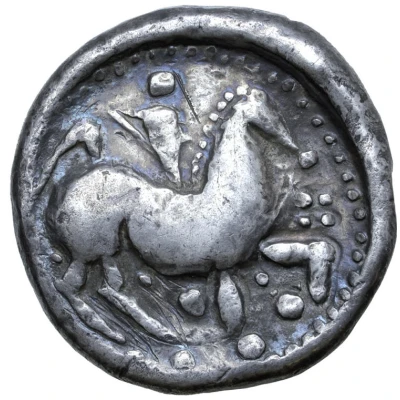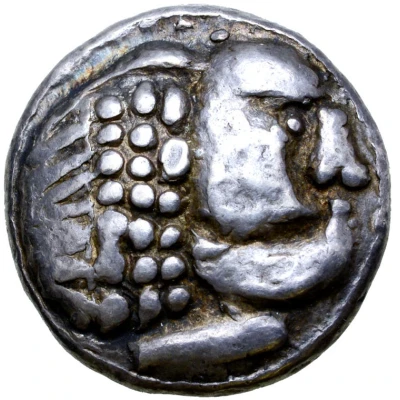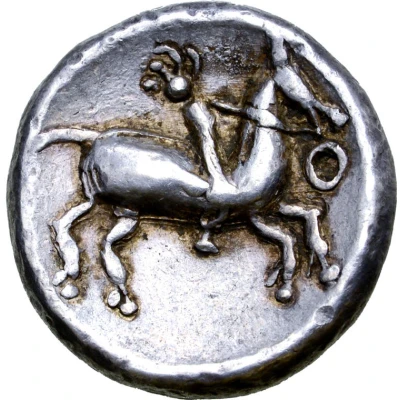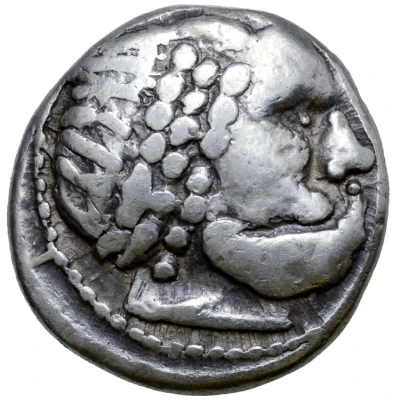
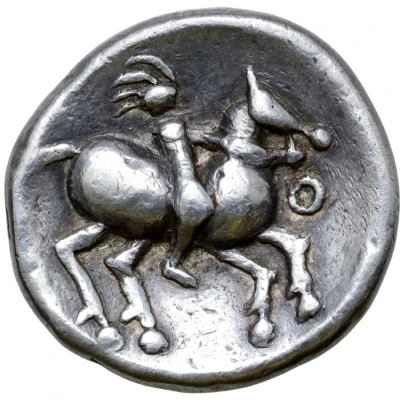

© Roma Numismatics Limited
Tetradrachm Triple-Pearl-Circlet Type 300 BC - 201 BC
| Silver | 13.12 g | 24 mm |
| Issuer | Uncertain Eastern European Celts (Uncertain Central and Eastern European Celts) |
|---|---|
| Type | Standard circulation coin |
| Years | 300 BC - 201 BC |
| Value | Tetradrachm (4) |
| Currency | Drachm |
| Composition | Silver |
| Weight | 13.12 g |
| Diameter | 24 mm |
| Shape | Round (irregular) |
| Technique | Hammered |
| Orientation | Variable alignment ↺ |
| Demonetized | Yes |
| Updated | 2024-10-09 |
| Numista | N#193154 |
|---|---|
| Rarity index | 100% |
Reverse
Rider with spiked hair on horseback to right; annulet before.
Comment
Examples of this type:• Example #1 (13.12g, 24mm, 3h, Very Fine):
© Image courtesy of Roma Numismatics Limited
◦ Ex-Hermann Lanz Collection; published in Michaela Kostial - "Kelten im Osten. Gold und Silber der Kelten in Mittel und Osteuropa, Sammlung Lanz", München, 1997, #387;
◦ Exhibited by the Staatlichen Münzsammlung München at the 1997 International Numismatic Congress in Berlin; at the Berliner Bank also in 1997; also exhibited at the Luitpoldblock Palmengarten, Munich in 2003 (exhibition #71[reverse]);
◦ Auctioned by Roma Numismatics Ltd, Auction XVII, 28 March 2019, Lot 103. Sold for 500 GBP.
◦ Auctioned by Numismatik Lanz München, Auction 64, 11 October 1993, lot 8.
• Example #2 (13.42g, 23mm, 2h, Very Fine, toned):
© Image courtesy of Roma Numismatics Limited
◦ Ex-Hermann Lanz Collection; published in Michaela Kostial - "Kelten im Osten. Gold und Silber der Kelten in Mittel und Osteuropa, Sammlung Lanz", München, 1997, #389;
◦ Auctioned by Roma Numismatics Ltd, Auction XVII, 28 March 2019, Lot 104. Sold for 280 GBP.
◦ Auctioned by Numismatik Lanz München, Auction 20, 13 April 1981, lot 8.
Interesting fact
The Tetradrachm (Triple-Pearl-Circlet Type) coin from Uncertain Eastern European Celts is notable for its unique design, which features three pearls surrounded by a circlet on the obverse (front side), and a stylized head of a Celtic deity on the reverse (back side). This design is unlike any other coins from the same time period, and it suggests that the Celts of this region had a strong maritime trade and cultural exchange with other civilizations. The use of pearls in the design may indicate a connection to the Mediterranean region, where pearls were highly valued for their beauty and rarity.
